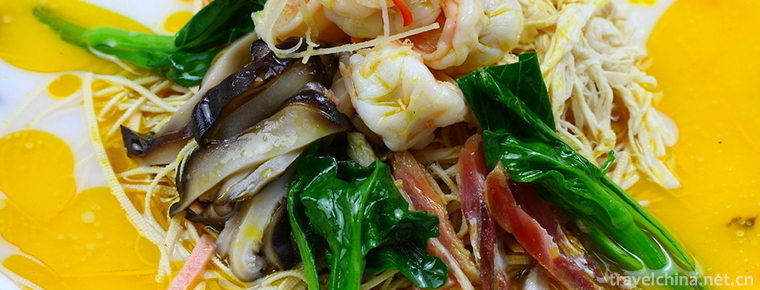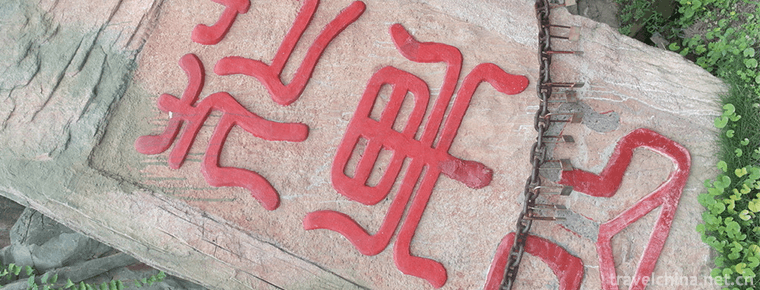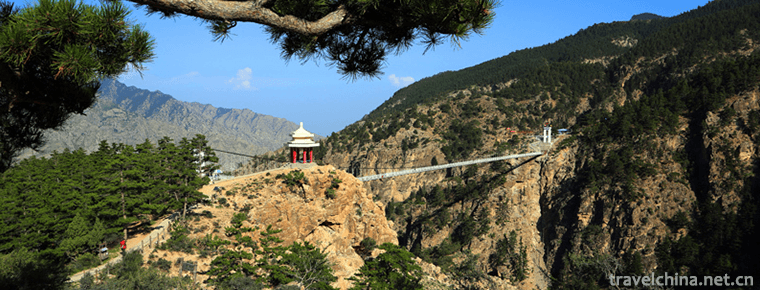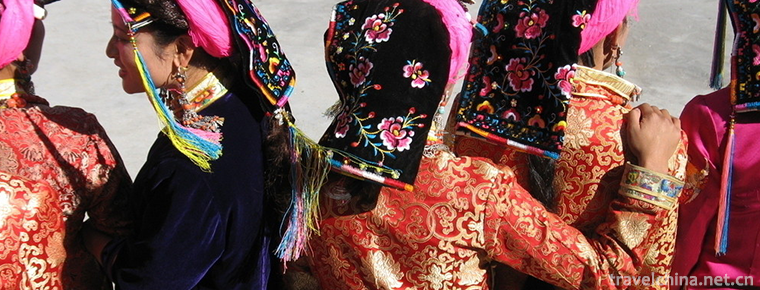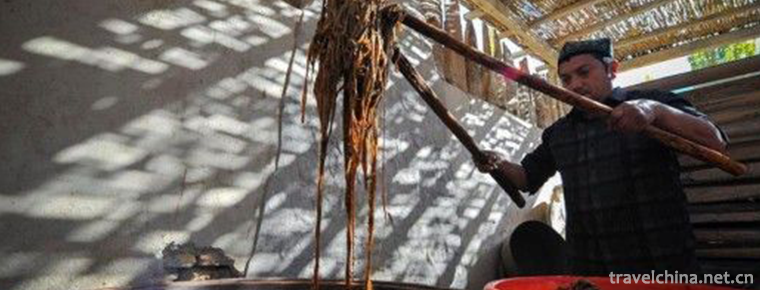Napo Zhuang Folk Songs
Napo Zhuang Folk Songs
Napo Zhuang, also known as "Heiyizhuang", is a unique ethnic group among the Zhuang people. It calls itself "Min", "Zhong", "Ouch". Now there are about 518,000 people. They are named for their all-black clothes. They mainly live in Napo County, Guangxi, which is located on the border between China and Vietnam. Napo Zhuang folk song is a folk song that they have sung from generation to generation. In the long history, Heiyizhuang still preserves ancient, complete and colorful folk songs, and is known as the "rich mine of Guangxi national music" and the "living fossil" of Zhuang folk songs.
The Zhuang people in black can not only sing, but also dance well. In some villages in Napo County where black clothes are strong and live together, from three-year-old children to ancient rare elderly people can dance with ancient music, such as welcome dance, black gun dance, wedding dance, last general dance and so on. The scene is magnificent. Heiyizhuang's clothes with black as beauty, original and beautiful folk songs even developed into two-part ensemble, the melody is soft and long.
On May 20, 2006, Napo Zhuang folk songs were listed in the first batch of national intangible cultural heritage list with the approval of the State Council.
historical origin
Napo Mountain Song has a long history, diverse forms and rich content. In the long process of development, Napo Zhuang folk songs have formed the characteristics of interdependence with folk customs, rich and colorful content and original ecology. Besides the functions of communication, propaganda, education and entertainment, Napo Zhuang folk songs have historical, academic, artistic and practical values. They are the relics of the ancient ballad culture of the Zhuang nationality.
artistic characteristics
Point by tone
It can be divided into six categories, i.e. albeit sensitive, ni's ah, lun, Chunniu tune, inviting celestial song and pan-sharp, about 160 sets. Among them, "Nidi" is the meaning of "good" in Napo Zhuang Language of Guangxi, and is commonly used as a lining in folk songs spread in Heiyizhuang living areas. The "Nide'a" folk song has become the symbol of the music of the Zhuang nationality because of its fresh and bright tune and unique artistic charm.
By content
Napo Zhuang folk songs mainly include narrative songs of myths and legends, biographies of characters, environmental changes, historical events, etc; songs of bitterness pouring out misery and complaining oppression; agricultural songs reflecting nature and life experience; eulogies for beautiful scenery; ritual songs for receiving people and things; folk songs expressing traditional customs; sacrificial songs mourning mourning; sacrificial songs celebrating the full moon of marriage, the completion of new residence and the birthday of the elderly. A toast song. The most abundant are love songs, which contain more than 20 kinds of content, such as lyric, first love, even love, teasing, gambling, esteem, pledge, praise, acacia, loyalty, separation, exhortation, regret, nostalgia, reunion, bitterness, sigh, struggle, old age and so on.
Representative Works
Representational repertoires include "Although entertaining guests", "On the Creation", "Liquor Song", "Pange", "Song of ancestors worship" and so on.
Inheritance Significance
At the opening ceremony of Nanning International Folk Song Festival in November 2001, Heiyizhuang shocked four people by showing his beautiful black clothes and singing folk songs. So far, it has attracted the attention of scholars, musicians and photographers both at home and abroad, and has gone deep into the Dashi Mountain to suck the nutrition of art.
Due to the changes in the cultural space for survival and development, the disappearance of the main ways of inheritance, the shrinking of the activity venues and the fault between teachers and inheritors, Heiyizhuang ballads are facing a severe crisis of inheritance. Therefore, it is imperative to rescue, dig, sort out and protect the songs of the Black Clothes Zhuang.
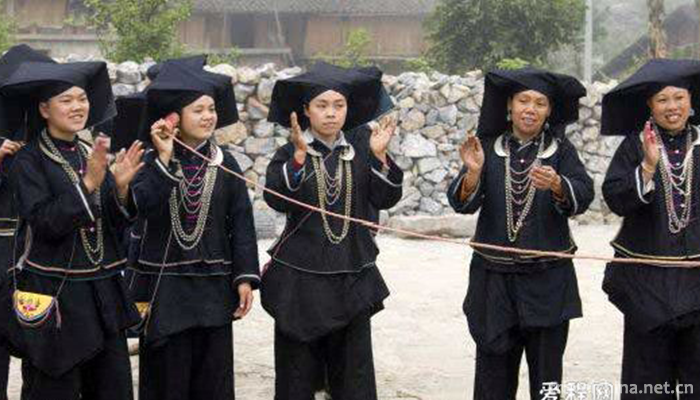
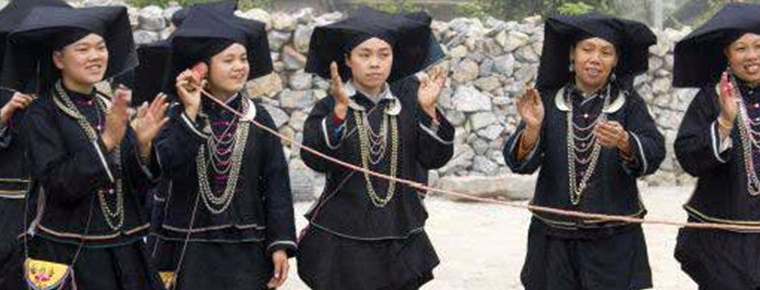
Napo Zhuang Folk Songs
-
Braised Shredded Chicken with Ham and Dried Tofu
Braised Shredded Chicken with Ham and Dried Tofu, also known as chicken juice, boiled silk, the traditional dishes are Huaiyang cuisine
Views: 225 Time 2018-10-27 -
China Railway HighSpeedCRH
China Railway High-Speed (CRH) has two meanings: the technical standard of China High-Speed refers to the passenger dedicated line railway with 250 km/h
Views: 174 Time 2018-11-13 -
MountHuaguoshan
Mount Huaguoshan (Lianyungang Huaguoshan Scenic Area) is located at the middle foot of Nanyuntai Mountain in Lianyungang City.
Views: 303 Time 2018-12-06 -
Wanjiazhai Water Conservancy Scenic Area of the Yellow River
Wanjiazhai Water Conservancy Project is located in the canyon of the north main stream of the Yellow River from Toketo to Longkou. It is the first of eight cascades planned and developed in the middle
Views: 243 Time 2019-01-18 -
suyukou national forest park
Suyukou National Forest Park is located in Helan Mountain National Nature Reserve, 50 kilometers northwest of Yinchuan City, capital of Ningxia. It is a national 4A-level tourist attraction.
Views: 182 Time 2019-02-13 -
Baxian Yaochi Party
Baxian Yaochi gathering is a traditional dish in Tai'an, Shandong Province, which belongs to the Shandong cuisine family. Egg white is the main material for Baxian Yaochi gathering.
Views: 148 Time 2019-03-27 -
Tibetan costume
Tibetan costumes Tibetan men's clothes are divided into three categories: labor dress, superfluous dress and warrior dress. Women's clothes change greatly in festivals, major events in life and etique
Views: 223 Time 2019-04-05 -
Uygur Mulberry Paper Making Skills
Uygur mulberry paper takes mulberry branch endothelium as raw material, mulberry branch endothelium is sticky, smooth and delicate, easy to process, after exploitation, soaking, pot boiling, pounding,
Views: 150 Time 2019-06-28 -
Zhangjiajie Yangxi Opera
Zhangjiajie Yangxi Opera originated in the middle of Qing Dynasty and has a history of more than 300 years. It belongs to Beilu Yangxi Opera. The singing feature is the singing method of "golden
Views: 134 Time 2019-07-16 -
Anhui University Of Traditional Chinese Medicine
Anhui University of Chinese Medicine is located in Anhui. Jiangnan Labial teeth, Huai right A famous historical and cultural city called "the throat". Hefei For Anhui higher education revita
Views: 161 Time 2019-11-07 -
Tongling University
Tongling University is a multi-disciplinary province. Undergraduate Regular institutions of higher learning It is the base for training and training talents of Finance and economics in Anhui province.
Views: 185 Time 2019-11-18 -
Chengdu Jinsha Site Museum
Chengdu Jinsha Site Museum, a national AAAA tourist attraction, is located at No.2 Jinsha Ruins Road, Qingyang District, Chengdu City, Sichuan Province. It covers an area of 456 Mu and a building area of 38000 square meters.
Views: 225 Time 2020-11-06
